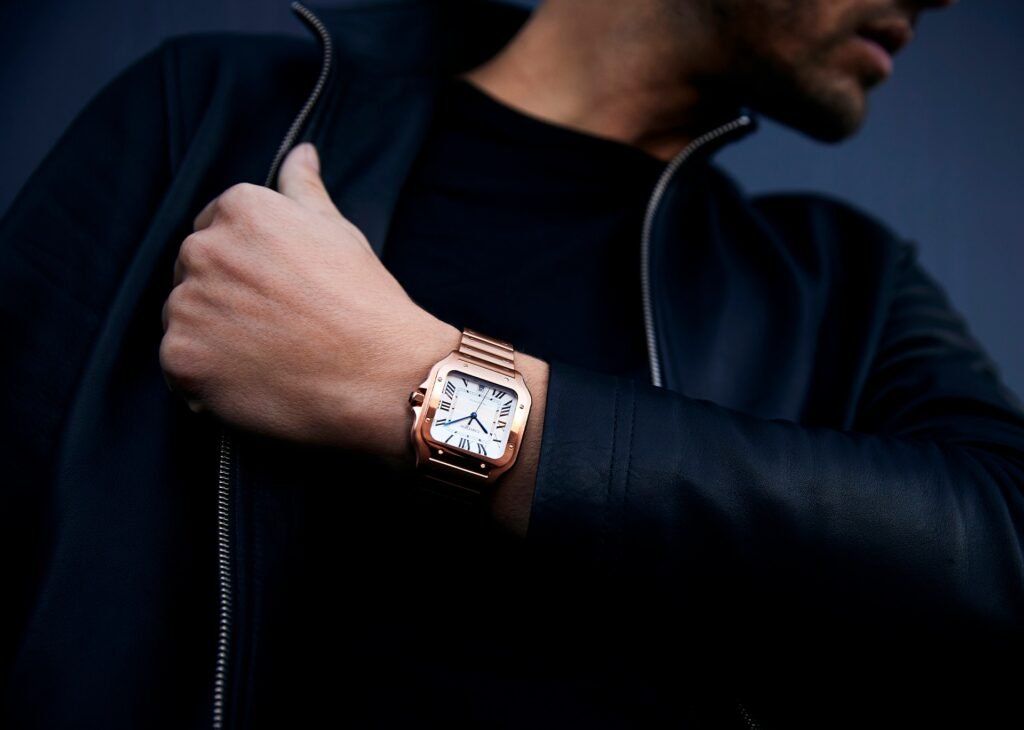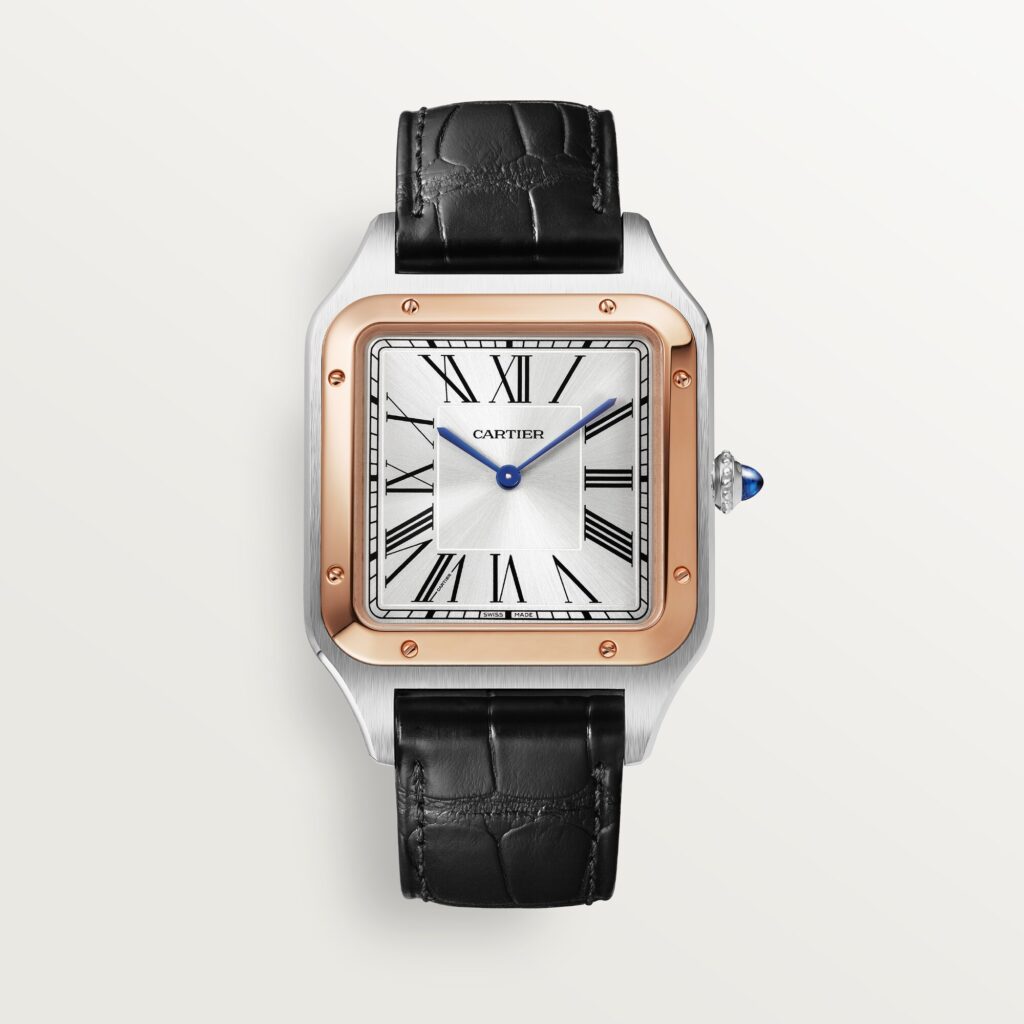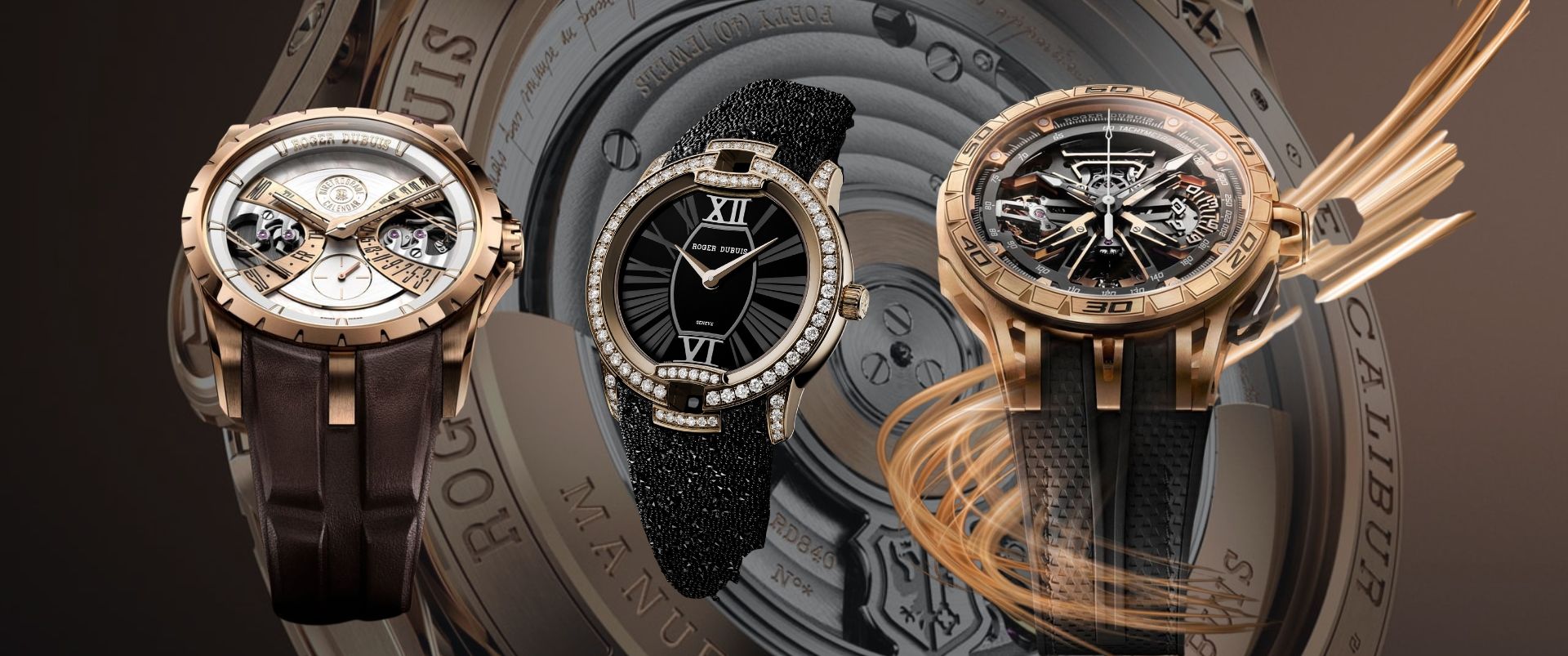The Timeless Evolution of Cartier Santos: A Historical Journey
Evolving from its aviation origins to its present-day embodiment of luxury and style, the Cartier Santos has seamlessly upheld its iconic design. Here's the story of its journey:
In the world of horology, few watch collections can boast a history as rich and enduring as the Cartier Santos. From its inception in the early 20th century to its current status as an icon of luxury, the Cartier Santos collection has seen a remarkable evolution.

The Birth of the Cartier Santos in 1904
In the early 1900s, aviation pioneer Alberto Santos-Dumont faced a challenge – checking time in-flight with traditional pocket watches was cumbersome. In 1904, he approached Louis Cartier with a unique request for a pilot-friendly watch. Louis Cartier embraced the challenge, resulting in the groundbreaking Cartier Santos, featuring a distinctive square case with exposed screws, tailored for aviators.
Cartier Santos: One Of The First Men’s Wristwatches
By 1911, Cartier boldly introduced the Santos into mainstream production, making it readily available to the public. This pivotal move marked a notable shift in the wristwatch landscape, as it represented the first instance of a wristwatch tailored explicitly for men becoming widely accessible. The Santos challenged existing norms with its distinctive square case, rounded corners, leather strap, and practical design, setting new standards for men's timepieces.
Although the Cartier Santos was not the absolute first wristwatch ever crafted, its profound influence on the watchmaking industry and men's fashion played a pioneering role in establishing the wristwatch as a stylish and functional accessory for men, thereby shaping the course of horological history.

The Rise of the Icons
As the world moved into the 1970s, luxury steel sports watches began to gain popularity. The Audemars Piguet Royal Oak and Patek Philippe Nautilus were leading the charge in this new trend. Cartier, always attuned to the evolving tastes of the times, responded by updating their classic Santos watch in 1978, giving birth to the Santos de Cartier. This new version featured a stainless steel case with gold accents, marking a departure from Cartier's traditional use of precious metals. The result was a resounding success, capturing the spirit of the 1980s and becoming an icon of luxury watchmaking.
The Turn of The 21st Century For Cartier Santos
To commemorate the Santos' 100th anniversary, Cartier introduced the Santos 100 collection in 2004, harmonising tradition and innovation through a selection of case materials.
Between 2004 and 2017, Cartier demonstrated its artisanal prowess with skeletonized iterations housing the in-house 9611 MC movement. In 2018, after a decade-long hiatus, the Santos returned with a refreshed lineup of 13 watches, featuring the in-house caliber 1847 MC and user-friendly innovations like SmartLink and QuickSwitch. The expansion continued in 2019 with the Santos Chronograph and quartz Santos-Dumont, honoring tradition while embracing innovation, solidifying Cartier's commitment to the Santos' legacy.

Current Situation: The Timeless Icon
The Santos remains an enduring icon in the luxury watch world, known for its timeless design featuring a square case, exposed screws, and Roman numerals collection spans a wide spectrum, from classic stainless steel to exquisite diamond-adorned renditions. Recent developments include limited editions, collaborations with artists, and the use of innovative materials, maintaining the collection's freshness and innovation. From its aviation origins to its current status as a symbol of luxury and style, the Santos has evolved while maintaining its iconic design. Cartier's commitment to this iconic timepiece is evident, ensuring its continued presence on wrists for generations to come.
The Santos, born in 1904, epitomises enduring design and the wisdom of investing in timeless fashion. It stands as a true icon of lasting elegance in horology.
No articles found





